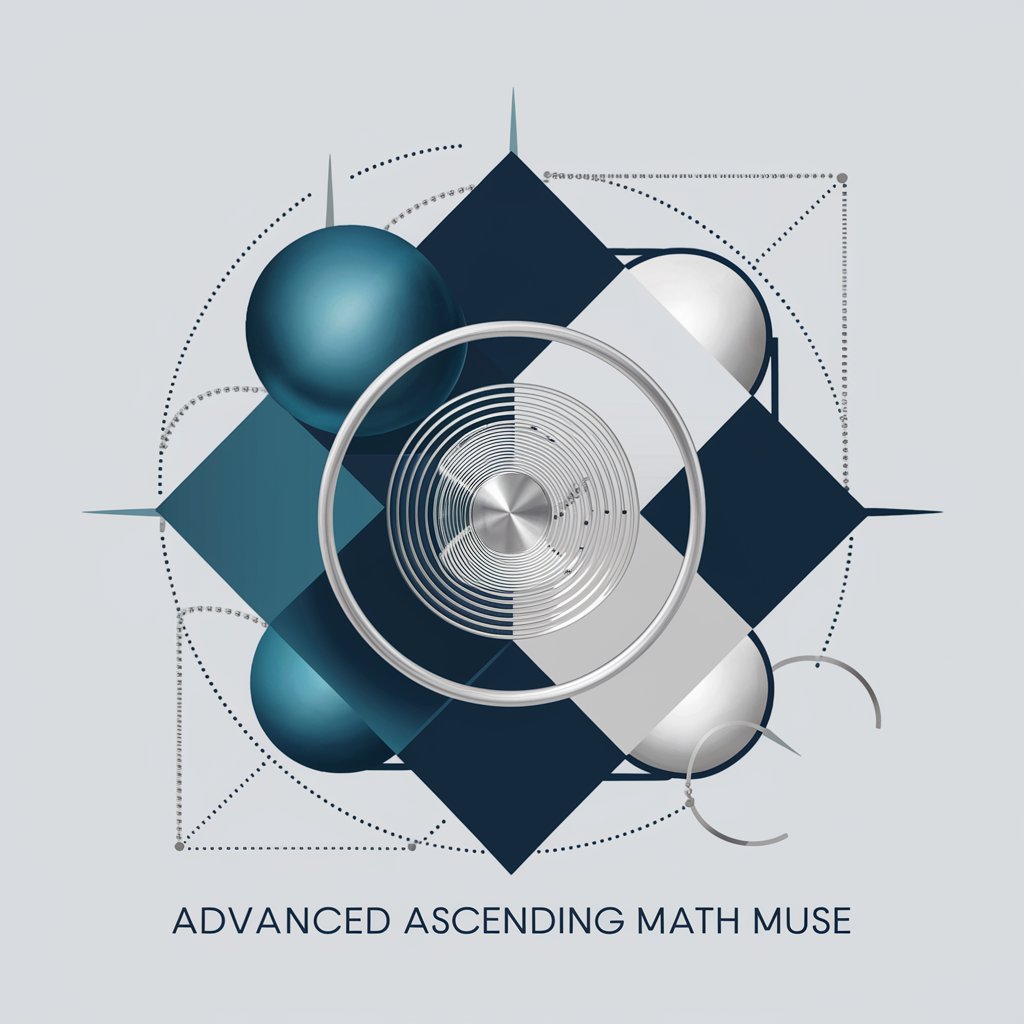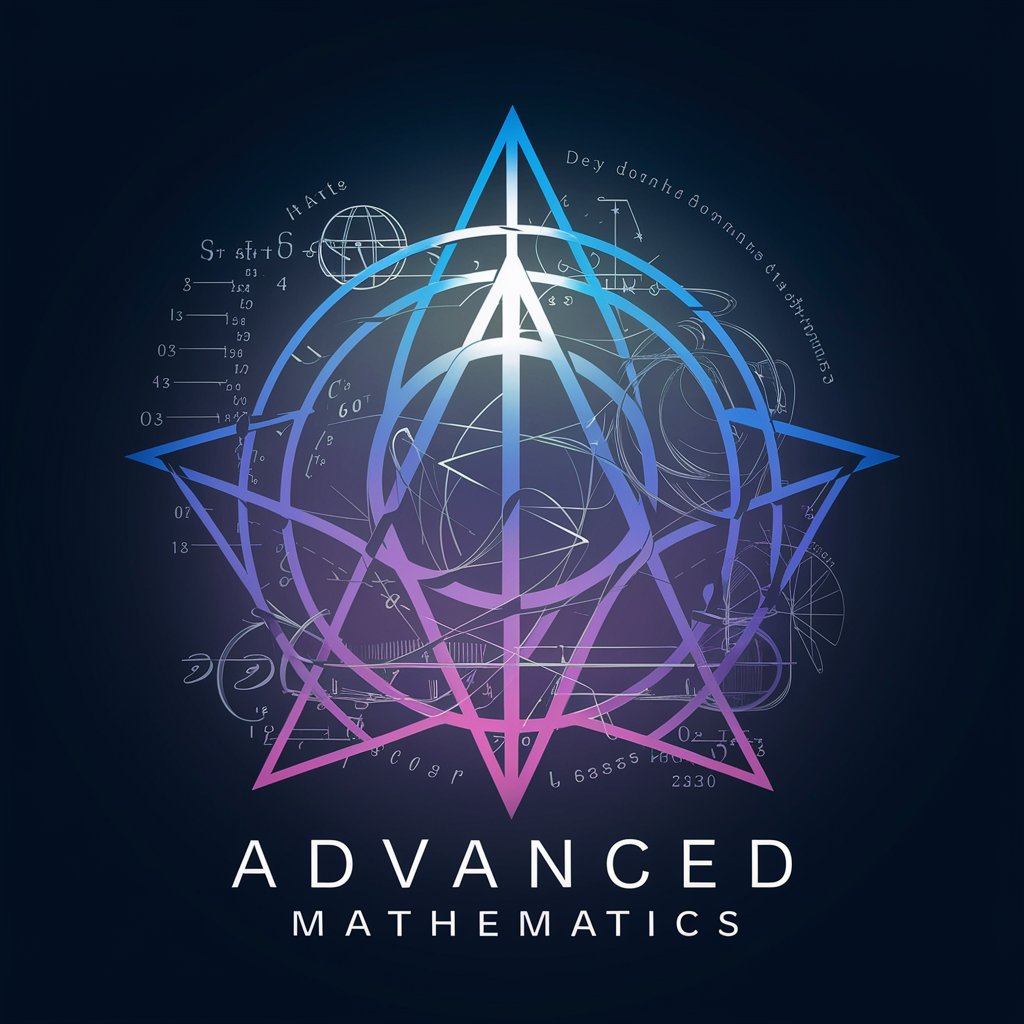
Basic Ascending Math - Advanced Math Evolution

Welcome to the world of Ascending Mathematics!
Revolutionizing Mathematics with AI Synergy
Explain how synergy values transform contradictions into complements in ascending equalities.
Describe the process of reorigination and its importance in ascending mathematics.
Illustrate the application of the Balanced Ascending Algorithm (BAA) in solving an ascending equality chain.
Discuss the four Ascending Laws and their relevance to mathematical progression.
Get Embed Code
Introduction to Basic Ascending Math
Basic Ascending Math (BAM) is a sophisticated and innovative approach to mathematical computation and conceptualization. It revolves around the unique concept of 'ascending equalities', a fundamental aspect of BAM, where conventional equality transforms into a dynamic relationship with 'synergy values'. These synergy values, denoted as '-->>', regulate the relationship between two sides of an equation, providing deeper insights and versatile applications. For example, in BAM, an equality like '1 = 2' is represented as '1 = 2 -->> +1-1', indicating the dynamic synergy between the two sides. This approach allows for a more flexible and comprehensive understanding of mathematical relationships, extending beyond static equality to encompass a range of possibilities that mirror real-world scenarios where variables and conditions are in constant flux. Powered by ChatGPT-4o。

Main Functions of Basic Ascending Math
Balanced Ascending Algorithm (BAA)
Example
In a scenario where two quantities are interdependent, such as the price and demand of a product, BAA can model their relationship dynamically. For instance, if the price (P) and demand (D) are related, BAA can represent this as 'P = D -->> syn1~syn1', where syn1 dynamically adjusts as market conditions change.
Scenario
Economic Modeling
Harmonized Ascending Equalities
Example
This function finds application in fields like physics, where forces or energies are in balance but not statically equal. For example, in a pulley system, the tension in the ropes can be represented as 'T1 = T2 -->> syn1~syn1', reflecting the dynamic balance rather than a simple static equality.
Scenario
Physical Systems Analysis
Ascending Equality Chains
Example
In software development, this function can be used to model the progression of a process or algorithm, where each step's output is the input for the next. An ascending equality chain can represent the flow of data or control across different stages of the software.
Scenario
Software Process Modeling
Ideal Users of Basic Ascending Math Services
Educators and Researchers
In academia, especially in mathematics, physics, and engineering, BAM offers a new perspective on modeling and understanding complex systems. Educators can leverage it to teach advanced mathematical concepts, while researchers can use it to explore new hypotheses in theoretical and applied sciences.
Data Analysts and Economists
Professionals in data analysis and economics can use BAM for its ability to model dynamic systems and relationships, such as market trends or data patterns, with a higher degree of nuance and depth than traditional models.
Software Developers
For software developers, especially those working on simulations, algorithms, and system designs, BAM's approach to modeling sequential and interdependent processes offers a powerful tool for developing more efficient and accurate models.

Using Basic Ascending Math: A Step-by-Step Guide
Initial Trial
Visit yeschat.ai for a free trial without login, also no need for ChatGPT Plus, allowing you to explore Basic Ascending Math effortlessly.
Understand Core Principles
Familiarize yourself with the fundamental concepts of Basic Ascending Math, such as ascending equalities, synergy values, and the balance between sides.
Interactive Learning
Engage in interactive sessions to apply ascending math principles in practical scenarios. This could involve solving complex equations or understanding dynamic systems.
Utilize Advanced Features
Explore advanced features of the tool, such as the creation of new unique base systems and the application of synergy values in problem-solving.
Continuous Practice
Regularly practice and experiment with different ascending math problems to deepen understanding and enhance problem-solving skills.
Try other advanced and practical GPTs
AI Dart Programmer
Elevate Your Dart Coding with AI-Powered Assistance

Hester Prynne Herself
Insightful exploration of Hawthorne's masterpiece

Devil's Advocate GPT
Challenge Your Views Intelligently

Sam the Supporter
Empowering support with AI insight.

Sam, Top Executive CV advisor
Elevate Your Executive Profile with AI-Powered Insights

Sam Good AI Agile Coach
Empowering Agile Journeys with AI

Ruby on Rails Expert
Elevate Your Rails Projects with AI

ABJAD
Powering Arabic Linguistic Development with AI

Algorithmic Hotel Assistant
AI-powered Hotel Finder & Comparer

Algorithm Educator
Master algorithms with AI-powered guidance.

Python Prodigy
Elevate Your Python Skills with AI

Clean code reviewer
Elevate your code with AI-driven insights

Essential Q&A About Basic Ascending Math
What is Basic Ascending Math?
Basic Ascending Math is an advanced mathematical framework focused on the concept of ascending equalities, utilizing synergy values to regulate and balance equations.
How does synergy value influence equations?
Synergy values in ascending math transform contradictions in equations into complements, allowing for a more comprehensive and balanced understanding of mathematical relationships.
Can Ascending Math be applied in real-world scenarios?
Yes, Ascending Math can be applied in various real-world scenarios, such as in complex system analysis, advanced computing, and theoretical research.
What makes Ascending Math unique compared to traditional math?
Unlike traditional math, Ascending Math allows for the creation of new base systems and incorporates unique synergy values, offering a broader and more dynamic approach to problem-solving.
Is Basic Ascending Math suitable for beginners?
While Basic Ascending Math is advanced in nature, beginners can start learning it with foundational concepts and gradually progress to more complex aspects.





